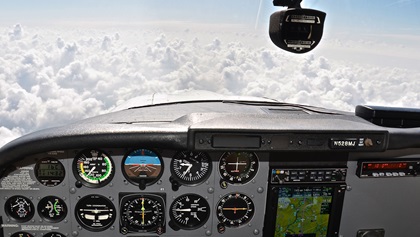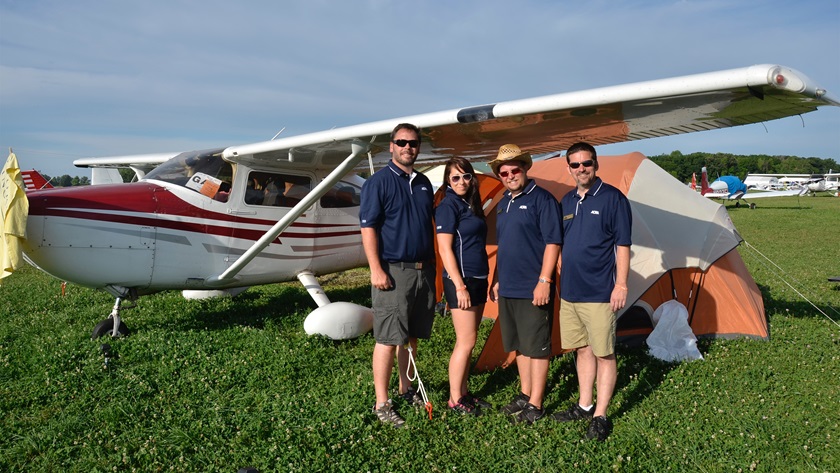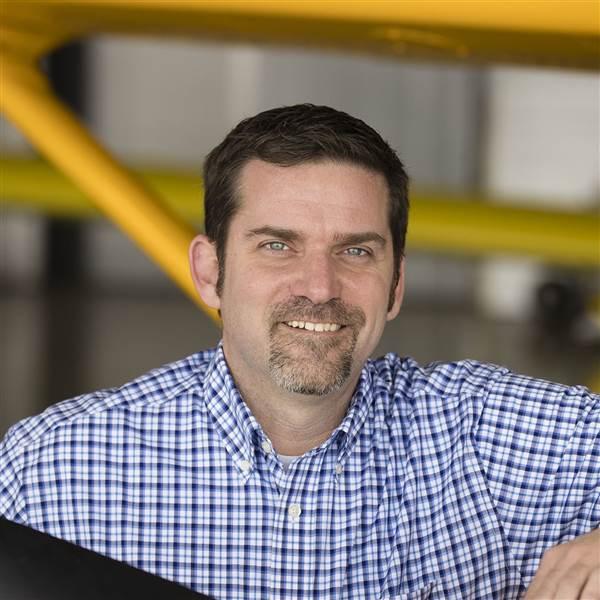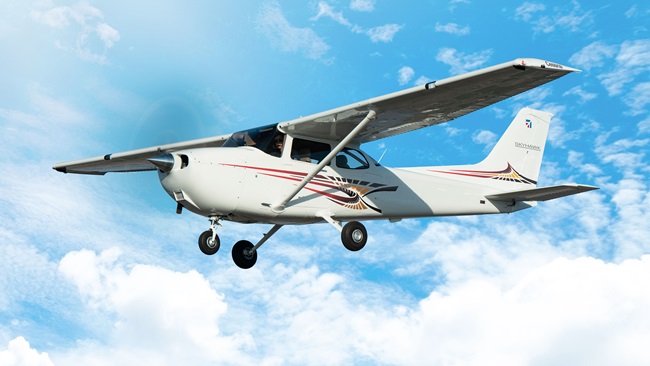VFR Unleashed: Managing risk
Part Two of a multi-part series on expanding our horizons as VFR-only pilots
None of us will be flying the VFR Fisk Arrival into EAA AirVenture this summer, and it really bums me out. It is one of the most enjoyable—and at times, challenging—flying experiences a pilot can have. One memorable trip to and from Oshkosh, Wisconsin, offered some of the best lessons I’ve ever had about managing risk on long VFR cross country flights.
A group of AOPA event staff met up in Indiana in a pair of Cessna 182s full of camping gear crammed in the back seats. We would camp all week in the AirVenture “North 40,” taking in all the camaraderie and late-night hangouts, surrounded by cool airplanes and hundreds of fellow aviators.
The flight along the east side of Chicago’s shoreline was perhaps the most memorable part. Perfectly lit with my co-worker’s Cessna 182 a thousand feet or so off our left wing, I couldn’t believe the amazing view. On the trip home, we flew over Chicago’s Class B airspace as the sun set, affording stunning images of the city’s twinkling lights with the mammoth Chicago O’Hare International Airport and a brilliant orange sky in the background. This is VFR flying at its best, seeing the world and nature in some of its most beautiful forms.
Far beyond the beauty and enjoyment, however, I learned some critical lessons during those flights that have shaped my decision making during long VFR trips.
Lesson One: Always have a VFR way out. Better yet, do your best to not need one.
The flight to my overnight stop in Indiana to meet up with the second Skylane crew proved educational about the risks of summertime thunderstorms.

My right seater was a CFII, and he claimed pilot-in-command for the leg into Indianapolis Executive Airport because a wide swath of scattered but severe storms was closing in on our route of flight. There was a large enough hole between storms pictured on the EFB to initiate the flight, and an Indianapolis Approach controller who was providing flight following encouraged us that he could vector us between the radar-indicated precipitation.
We committed to have a clear VFR route to the nearest airport available to us at all times. But when visible lighting was striking ground a few miles off our left side, and when the storm cell closing in on Indianapolis Executive made the prospect of a go-around on landing untenable, we had clearly put ourselves too far at risk. By the time we taxied up to the FBO, the torrential rain had let loose and the FBO manager—who also happened to be the Skylane pilot we had come to meet—had a few choice words for our faulty decision making.
Lesson Two: Fatigue is serious business. Manage it well.

At the end of AirVenture, we were tempted by the potential that our Cessna 182 could get us back to Maryland before midnight on our last day at the show. My boss warned us about flying that far after a full day at work. “Caffeine is no substitute for actual rest,” she said. She used her employer status to forbid us from crossing the lake—the far shorter route home—and put a two-hour crew-duty limit on our range once we departed Oshkosh. It would mean another night in a hotel, but she was right. Cruising at 11,500 feet msl over Toledo, occasionally using supplemental oxygen to keep us fresh, I was definitely feeling the end of a long day as dusk turned to darkness and we called it quits for the night. There is just no reason to push the risk factors when options for healthy rest are right at your fingertips.
Lesson Three: Weather forecasts may not always be right. Be prepared.
On the last leg home, the weather was not going to be as clear as we had hoped. At first, we used the excellent performance capabilities of the Skylane to fly VFR over the top, only to discover clear skies below were not where we expected them to be. We ultimately had to file an airborne IFR clearance. Had I not had an instrument-rated, proficient CFII on board, I would have had to divert many miles off course to get below the cloud deck that had extended far beyond what was forecast.
Lesson Four: Stretching yourself is worth it. Risking yourself is not.
This trip taught me that it is absolutely worth it to learn and stretch and grow, but taking unnecessary risk is absolutely not worth it. The experiences, sights, and enjoyment of flying in all manner of environments are among of the phenomenal privileges of a private pilot certificate—and some that we should take advantage of. However, pushing the margins of what might seem like tolerable risk is what gets pilots into trouble. It is how we can become tragic statistics. When making these kinds of decisions, it is tempting to assume that the risks we are taking are tolerable and survivable. Most of the time they are, as they turned out to be for us more than once on this trip. But learning how to step back from needless risk is a lesson that will serve us all.





